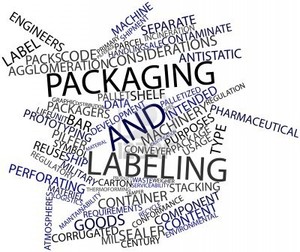In the European Union (EU), labels (Summaries of Product Characteristics, SmPCs) for biosimilars and their reference products are, in many instances, almost identical despite different data requirements for the authorization of biosimilars.
In 2012, the paper ‘Setting the stage for biosimilar monoclonal antibodies’ by Schneider et al. [1] – at that time member of the European Medicines Agency’s (EMA) Biosimilar Medicinal Products Working Party – highlighted three scenarios for the content of the biosimilar SmPC. The first scenario included having identical SmPCs for biosimilars and reference products, the second was having a biosimilar SmPC that only includes information generated (or confirmed) with the biosimilar, the third scenario suggested a ‘hybrid’ SmPC, containing information from the reference products and from the biosimilar product.
At that time, it was not known to what extent physicians use the SmPC as an information source when prescribing biologicals (including biosimilars). It was also not known whether physicians (or other stakeholders) consider the information in biosimilar SmPCs sufficient or perceived a need for additional information – and, if so, what type of additional information they would like to see in an SmPC.
To understand more about the above questions, EuropaBio commissioned a study of physicians’ labelling preferences in Europe [2] in 2015.
The survey was conducted between April and May 2015 in seven EU countries (France, Germany, Italy, Poland, Spain, Sweden and the UK) via an online anonymized questionnaire. A total of 210 physicians were sampled, including dermatologists, endocrinologists, gastroenterologists, haematologists, nephrologists, oncologists and rheumatologists. The vast majority of surveyed physicians (83.9%) had more than 10 years of practice, 89.5% had already prescribed a biological and 59.0% a biosimilar.
Regarding the use of the SmPC, the survey showed that the latter was the third most often referenced source of information when prescribing a biological product including a biosimilar. It was consulted ‘frequently’ or ‘occasionally’ by 90.5% of surveyed physicians. The SmPC came third after peer-reviewed journals (92.4%) and professional guidelines (91.5%).
When asked about the importance of the mandatory sections of the SmPC, almost all surveyed physicians (91.9%) considered Section 4, ‘Clinical particulars’ as the most important section. The SmPC section ‘Pharmacodynamic properties’, where clinical data and the biosimilar statement are found, received the lowest importance rating.
In the survey, physicians were asked to score the helpfulness of potential additional information in the biosimilar SmPC and their preferences between samples of Section 5.1 ‘Pharmacodynamic properties’, 4.2 ‘Posology and method of administration’, and 4.8 ‘Undesirable effects’ of the SmPC of an authorized biosimilar and the helpfulness of modified sample texts based on the same SmPC but with additional information.
Most physicians (78.1–82.9% according to the different sections) preferred the modified label samples that included additional information about what data had been generated with which product. In all seven countries and for all three samples on Sections 5.1, 4.2 and 4.8, respectively, the majority of surveyed physicians (60.0–93.3%) preferred the modified label sample versions with additional information over the current label samples. The preference for the modified label samples was higher among physicians who had not prescribed biosimilars before than among physicians who had already prescribed biosimilars.
Overall, the survey is the first of its kind in the EU to provide empirical evidence of physicians’ labelling preferences. It shows that physicians prefer more product-specific information in biosimilar SmPCs, and that the SmPC is an appropriate vehicle for providing physicians with information about biologicals.
Conflict of interest
The conduct of the survey and the preparation of the research paper [2] were funded in equal shares by AbbVie, Amgen, MSD, Novartis, Novo Nordisk and Pfizer. The ‘hybrid’ SmPC model, containing information from the reference and the biosimilar product, is the preferred model advocated by the majority of members of EuropaBio.
Abstracted by Riccardo Mezzasalma, Healthcare Biotechnology Officer at EuropaBio, Brussels, Belgium.
Editor’s comment
Readers interested to learn more about labelling for biosimilars are invited to visit www.gabi-journal.net to view the following manuscript published in GaBI Journal:
Tell me the whole story: the role of product labelling in building user confidence in biosimilars in Europe
Biosimilars naming, label transparency and authority of choice – survey findings among European physicians
Readers interested in contributing a research or perspective paper to GaBI Journal – an independent, peer reviewed academic journal platform – please send us your submission here.
Related article
FDA issues draft guidance on biosimilars labelling
References
1. Schneider CK, Vleminckx C, Gravanis I, Ehmann F, Trouvin JH, Weise M, et al. Setting the stage for biosimilar monoclonal antibodies. Nat Biotechnol. 2012;30(12):1179-85.
2. Hallersten A., Fürst W., Mezzasalma R., Physicians prefer greater detail in the biosimilar label (SmPC) – Results of a survey across seven European countries, Regulatory Toxicology and Pharmacology, 77 (2016), 275–281.
Permission granted to reproduce for personal and non-commercial use only. All other reproduction, copy or reprinting of all or part of any ‘Content’ found on this website is strictly prohibited without the prior consent of the publisher. Contact the publisher to obtain permission before redistributing.
Copyright – Unless otherwise stated all contents of this website are © 2016 Pro Pharma Communications International. All Rights Reserved.








 0
0











Post your comment